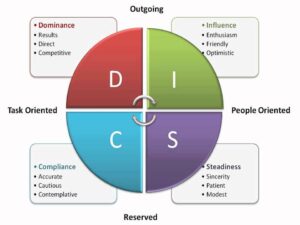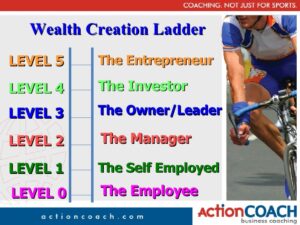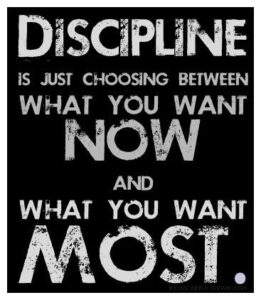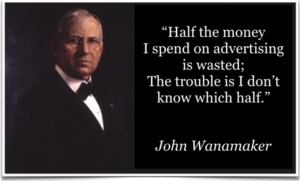Why is it that the failure rate of businesses in years 6-10 almost identical (c65%) to the failure rate of businesses in years 1-5? Why is there no ‘experience dividend’?
When you look at business growth in the context of business plans, it’s hard to see what can go wrong: progress is typically steep, evenly-paced and uninterrupted.
The daily reality can clash with expectations as your hopes for rapid, stress-free business growth become mired in fire-fighting. It can feel like a grind-a-thon of tackling the same old issues – like a business Groundhog Day.
It’s easier to view business growth as a spiral.

On each loop, you’ll be faced with the same limited number of challenges. Either because your previous attempt at addressing it wasn’t good enough or (preferably) the business has outgrown the last ‘fix’.
The quality of the solution and the conviction with which you implement it dictates how steep your growth spiral is.
When challenges are ignored or the solution to them is short-term, your business growth spiral will flatten and ultimately begin to fall. Equally, spend too long fixated on perfecting the ideal solution in one area and the challenges will stack up elsewhere. With the same consequences.
If you are pulled towards fire-fighting, the nature of your solutions will be quick fixes. They’ll break apart sooner forcing you to go back and patch them up. It’s a self-fuelling problem and there are only 2 ways to get back control.
The worst case is that your business shrinks – which brings problems of a different (and more painful) nature.
The alternative is to ring-fence time to address these issues proactively. The more pro-active you are in preparing for future growth, the more you will grow.
How is your approach affecting the situation?
One of the most popular tools I use is a behavioural profiling programme called DiSC. It’s a simplified version of Myers Briggs and categorises people into 4 distinct behavioural types. Of course, we are all capable of acting and behaving in line with any of the types – but over time a pattern will emerge. (If you don’t believe me, get a profile done and show it to your partner. I hope he or she doesn’t laugh as loudly as mine did).
Your behaviour type dictates your approach to this. In the context of how proactively & effectively you tackle these perennial business challenges, you’ll fall into 1 of 2 distinct camps.

High Dominance / Influence
- Benefits of this: D/Is are fast-paced; quick to voice opinions and to make decisions.
- Beware of: Changing your mind before the solution is properly implemented and also being a little inconsistent (slapdash).
High Steadiness / Compliance
- Benefits: S/Cs are more considered and patient and tend to stick with tasks until completion.
- Beware of: Getting bogged down in a solution – or leaving it too long to recognise the need to revisit a previous ‘fix’
TIP: Get your own DiSC profile done as being self-aware is a good start (I don’t rate the free ones – ask me and I’d be happy to arrange a proper one at cost). Also, everyone benefits from having a devil’s-advocate in business life – someone with training and perspective who challenges your approach.
What can you do to create a rising business growth spiral?
As I mentioned earlier there are only a limited number of basic business challenges – 7 in fact. As coaches when we talk about working ON your business as opposed to IN it, we’re referring to being proactive about addressing these 7 challenges to sustainable business growth.
In short, these areas determine your business growth spiral. They are all areas that if ignored today will have no short term negative consequences. But they are all areas which, if ignored over the longer term, will increasingly cause fires which need fighting.
Most of the time you’ll get some gentle warning signs that they need re-addressing – until the day they become urgent. So let’s take a look at them:
No 1: Develop Your Personal Identity.
Most business-people start out as employees who then become self-employed.
The mind-set is simple: if you want more – do more. Budgets are tight and you need to wear all the hats: marketing, sales, delivery, invoicing – the lot. Getting a business off the ground is suited to people with the drive and determination to get through this period: confident, focused and driven to tackle tasks in any of these areas successfully. A bit of a super-hero.

The danger comes if you still have this identity as the business (and your team) grows. If you’re still the super-hero, helicopter-managing your employees, you become the log jam to growth. If everything continues to go through you, your growth and size are limited by your capacity to multi-task.
This is laid out in the Wealth (or Entrepreneurial) Ladder. Where you are on it determines how you think… and therefore how you act & react.
Your self-identity needs to keep pace with your business. It influences which tasks you leave to other people allowing you to focus all your energies on the tasks which will benefit the business most.
TIP: Ask yourself at the end of each day or week: on which level have I spent the majority of my time?
No 2: Improve Your Personal Discipline.
A good analogy for business success is ‘hammering the boulder’. At the start you can go through phases where nothing seems to be happening – and then it cracks. Clearly the harder you hit it (self-belief) multiplied by the size of your hammer (knowledge & skills) multiplied by the length and frequency of your hammering stints (commitment and discipline) determine how quickly your business grows.

Often, motivation gets confused with discipline.
As Dave Brailsford said (whatever your views on doping allegations he’s still an organisational genius) “Motivation ebbs and flows – but commitment is consistent”. Commitment is a decision to do what you said you would. You don’t have to be upbeat, enthusiastic or motivated to do that.
You are allowed to have down days in terms of motivation. You’re just not allowed to show it to your team, clients and partners.
Any serious business ambitions will inevitably involve developing cast-iron disciplines – especially around time management.
TIP: Measure the most important indicators of commitment for you – wake up time, books read, exercise etc. Then keep a tally of both Personal Bests and your performance. Keep these somewhere visible and review at the end of each week. Then decide if you need to / can up your game. It may well come down to trying a bit smarter and a bit harder for a bit longer than your competition.
No 3: KPIs – Measure the Vital Aspects of Your Business.
I keep getting told that cashflow (or lack of it) is the No 1 cause of business failure. I’m not sure I’d go so strong as to call that dumb – but it certainly isn’t helpful.
It’s like saying that the number one cause of death is the lack of a heart-beat. It’s after-the-fact and it doesn’t give you the first idea of what to do about it.
There are aspects of your business you need to get to grips with: Is your cash-flow getting stronger? Are some employees more productive than others? Which are your most valuable marketing channels? Products? Customers? Regions? Are your margins improving or declining as the business grows?

These will illuminate the core aspects of your business and allow you to see problems & opportunities further ahead of time – and help you put together more effective actions to address them.
Like it or not, numbers are the language of business – the more conversant you are the better.
TIP: Start with something you really need to know, figure out how to measure it and then express it as an average or percentage (which makes comparisons easier). That’s the first number on your KPI (Key Performance Indicator) dashboard. As businesses grow they become more complex and you’ll need to measure more KPIs to keep a handle on it – but a good overview dashboard should have no more than 10 numbers.
No 4: Develop a Scalable Marketing Strategy
When marketing works it’s an investment. When it doesn’t it is a cost.

So the question is: “Would you borrow money from a friend to put into marketing?” If your answer is ‘no’ then you likely don’t have a marketing strategy. You have a series of marketing activities that you put money into.
As your business grows so do the overheads – and therefore the risks to you personally. As a one man band you can leverage your network and get some business in an emergency – but this is unlikely to be enough when you have a team of mouths to feed.
Whilst a scalable marketing strategy is where you want to end up – I wouldn’t advise starting there. Simply focus on the most probable source of new customers … and take it seriously. Establish best practice, be 100% consistent and test & measure the results. If it generates customers for less than they spend – keep it. Then trial another.
TIP: It’s impossible to understate the importance of digital marketing and value-added content within that. Before you invest a single penny in this channel, ensure you read at least 3 quality books on the subject. SEO for Growth by John Jantsch and Phil Singleton is a great place to start.
No 5: Become an Expert at Business Planning
The two main arguments I hear to push back from strategic business planning are it’s too often wrong and that too much analysis can stifle creativity and entrepreneurial flair.

Success Ideas Teamwork Plans Signpost Shows Business Plans And Organization
According to a survey by Barclays, fewer than half of all registered businesses have a plan – and fewer than half of those refer to them. Having seen more than my fair share, I have some sympathy: they tend to be too long, contain extrapolations masquerading as forecasts and are short of ‘bottom-up’ strategies.
I prefer to look at business planning as the stepping stones to success: the clearer you are on them the more likely you’ll tackle the right things in the right order – with the right degree of oomph.
Think of it this way: Success is about getting onto the right trajectory and staying there. A business plan quantifies the end result; the trajectory required to get there and the actions to get on it.
Whether you measure your progress by customers, employees, cash flow, margins or best of all business valuation: use something to monitor your big picture progress. It’ll tell you when to celebrate when to draw breath for a moment – and when to be tough on yourself and re-double your efforts.
TIP: Make yourself differentiate between cause and effect. A great plan should differentiate between Outcomes, Variables and Action. Follow this link for more info on how to develop your skills at strategic business planning: South West London Business Planning Day: GrowthCLUB.
No 6: Commit the Vital Elements of Your Business to Systems
In general, we are not pre-programmed to become automatically more efficient. The opposite in fact. Left to our own devices – unmeasured and unmanaged – performance will drift off.

If you want a more profitable, more organised, less stressful and more valuable business – you have to actively create it. It will not build itself. The innovative, bright ideas you’ve implemented and the improvements you’ve made will not ‘stick’ unless you enshrine them in great systems.
In short: Sweat makes a job – systems make a business
For this reason, systemised businesses with management teams are twice as valuable as the average. The functionality and efficiency of Marketing, Sales, Delivery, Invoicing, Recruitment, Training, and Management – will all be improved by a systematic approach.
TIP: Start with the area that is causing you the most pain or costing you the most money or wasting the most time. Keep the systems simple – checklists, visual aids etc. Finally, if you want your team to follow your systems you’ll need to follow them yourself. This means you need to devote management/meeting time to it.
No 7: Build a Great Team
One of my favourite moments as a coach is seeing a client after they’ve hired their first all-star employee. Someone who takes ownership of that area.

It’s a mixture of pure relief and intense satisfaction. Suddenly the pressure of being the only one focused on business growth is lifted.
Identifying, recruiting, inducting, training and retaining great people is not optional if you want to grow a business to more than a handful of employees.
This is one of the purest tests of your skills as a Leader and a Manager. These aren’t abstract terms that only apply to people running big businesses. Start with your own personal discipline & attitude, extend through basic management/meeting skills into creating a compelling vision/culture.
A great starting point is to list the areas of the business where you need help. These will probably be the areas of business that you find a more of a drain on energy – the areas you love doing will give you more energy. Then detail the qualities (attitude, skills, experience etc) that your ideal candidate will have. Next, build a compelling case for that person to want to join you rather than your competition.
TIPS: Devise a multi-stage recruitment (and interview) plan designed to identify character & values. Interview with someone you trust to help out and offer another opinion. Commit to a process of managing them (role, targets, meetings etc). Getting the most from your employees is your job.
Because your business is either growing – or it’s dying
The first step is to recognise that sustainable business growth is an adventure where you’ll spend most of your time travelling rather than arriving.

As an early mentor once advised me, “When you run your own business, questions that need answering come at you non-stop. If you view them as problems that need facing up to, you’ll get ground down. If you view them as challenges that need tackling you might just enjoy it”.
As soon as you begin to build a proper team, you’re setting out on a path where you will only be rewarded by doing it properly. By building a great team who operate great systems to deliver your product in a way that consistently gets great reviews at the right margin to run everything and pay you a fair dividend.
As we refer to it in ActionCOACH: A commercial, profitable enterprise that works without you.
This is the life & lot of a business owner. Sustainable business growth is a challenge – a game. It’s one that you must enjoy playing – and must be played to win.
Want to know more about Tim Brown Business Coaching services in London? Get in touch now for your free of obligation business strategy review.





